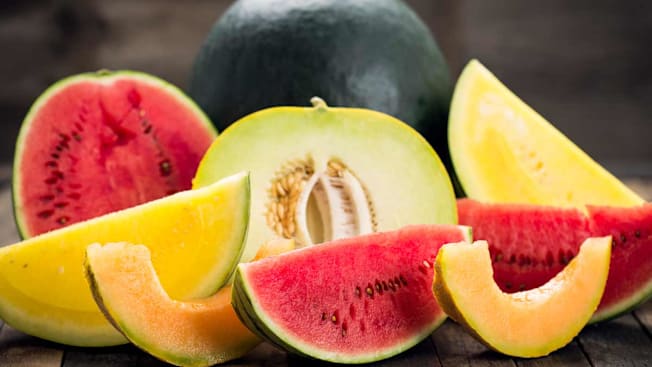The Big Health Benefits of Melon
Cantaloupe, honeydew, watermelon, and more: These delicious summer fruits pack plenty of important nutrients

Anyway you slice it, melon is refreshing and sweet, and at its peak this time of year for both flavor and nutrition. "Melons provide a good amount of nutrients for few calories [about 60 per cup]," says Sandra Arévalo, RDN, director of community health and wellness at Montefiore Nyack Hospital in New York. "Their high water content can also help you get the fluids you need to stay hydrated in warm weather." Plus, mixing up the types you eat can give you an array of benefits.
A Rainbow of Nutrients
All melons supply fiber and blood-pressure-lowering potassium, but they’re especially rich in antioxidants.
Hydration Help
All melons are about 90 percent water.
A small wedge of watermelon supplies nearly a cup of it; a cup of cantaloupe has about 5 ounces. While eating melon can’t replace drinking water, it can make a significant contribution to your daily fluid needs. And unlike plain water, melon supplies electrolytes, which help regulate nerve and muscle function (including your heart) and can be lost through sweat.
Food Safety Risk
Generally, melons are safe to eat, but whole and precut melons have caused outbreaks of salmonella infections. "Melons grow by laying on the soil directly, so they are susceptible to picking up pathogens," says Kara Lynch, RD, a food safety educator at Michigan State University Extension.
Avoid dented or bruised melons; the damaged areas can be entry points for bacteria. Before cutting a whole melon, wash the rind with a vegetable brush. Precut melon may be riskier because many fruits are processed in one place, creating opportunities for cross-contamination. If you choose to buy it, be sure it’s refrigerated or on ice. Keep cut melon cold and toss it after four days.
New Ways to Enjoy Melon
Nothing beats a sweet, juicy slice, but you can also try these ideas:
Freeze melon cubes in a single layer. Use as a fruity ice to make water more interesting.
Purée melon, leaving it a bit chunky. Freeze in ice pop molds for a refreshing treat.
Pair melon with salty ingredients in a salad. Options include feta cheese, capers, and olives.
Make a salsa for chicken or fish. Dice melon, cucumber, and red onion and adding lime juice and chopped cilantro.
Grill thick slices of melon for dessert.
Editor’s Note: A version of this article also appeared in the August 2024 issue of Consumer Reports On Health.




















